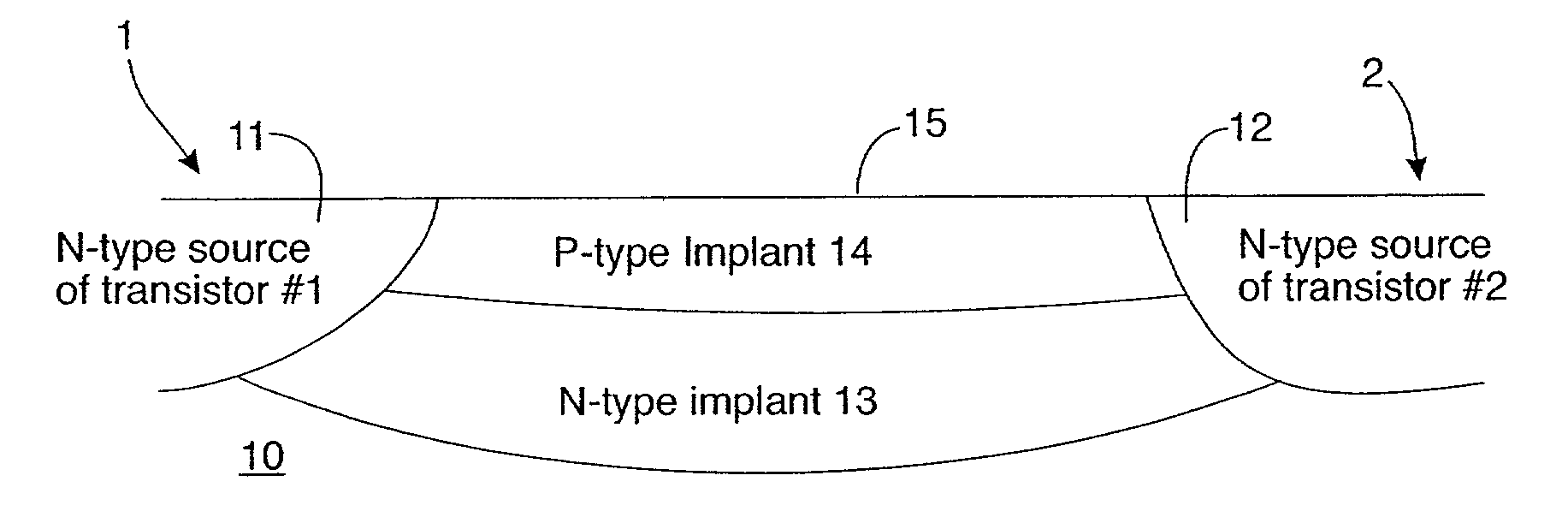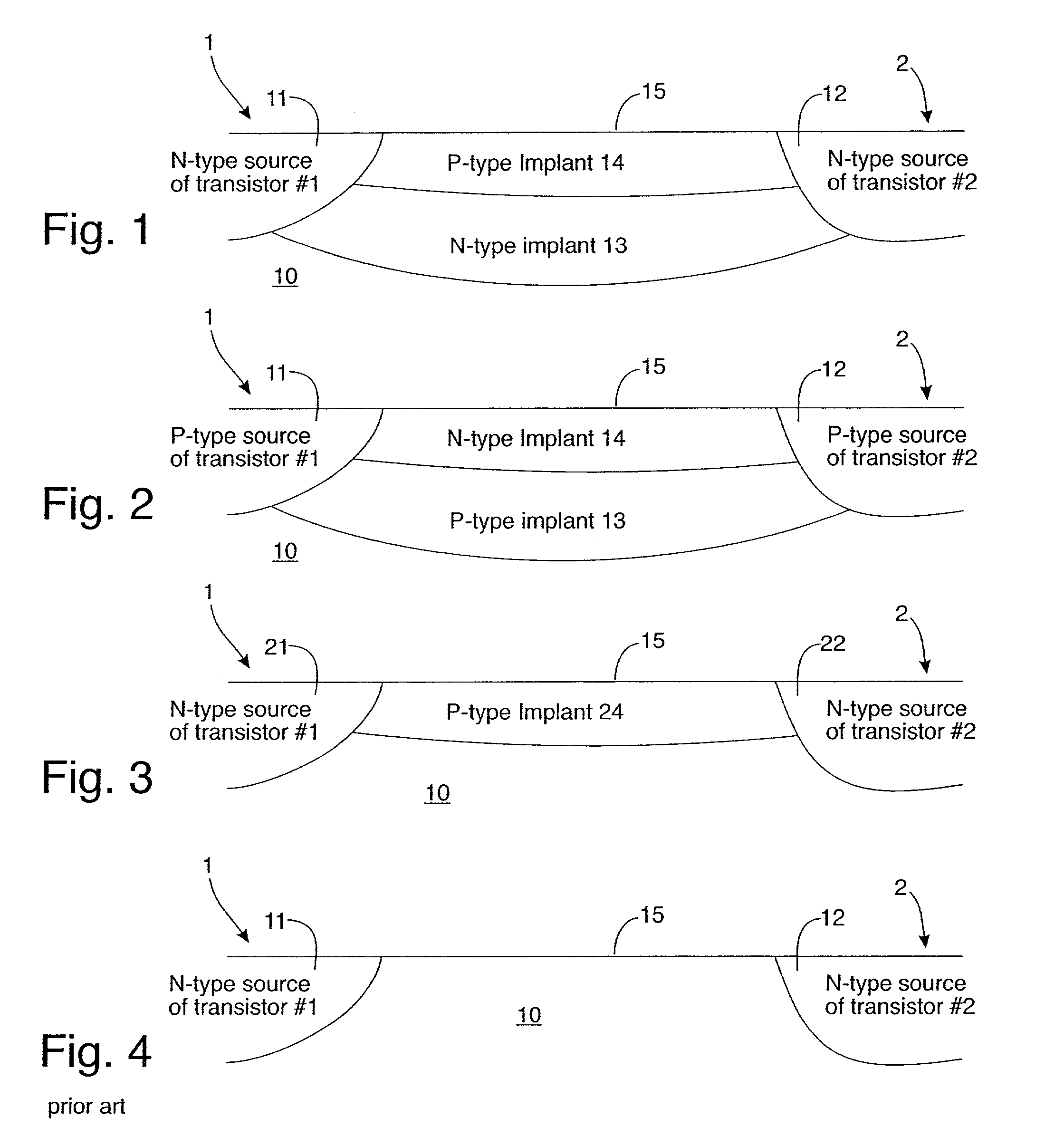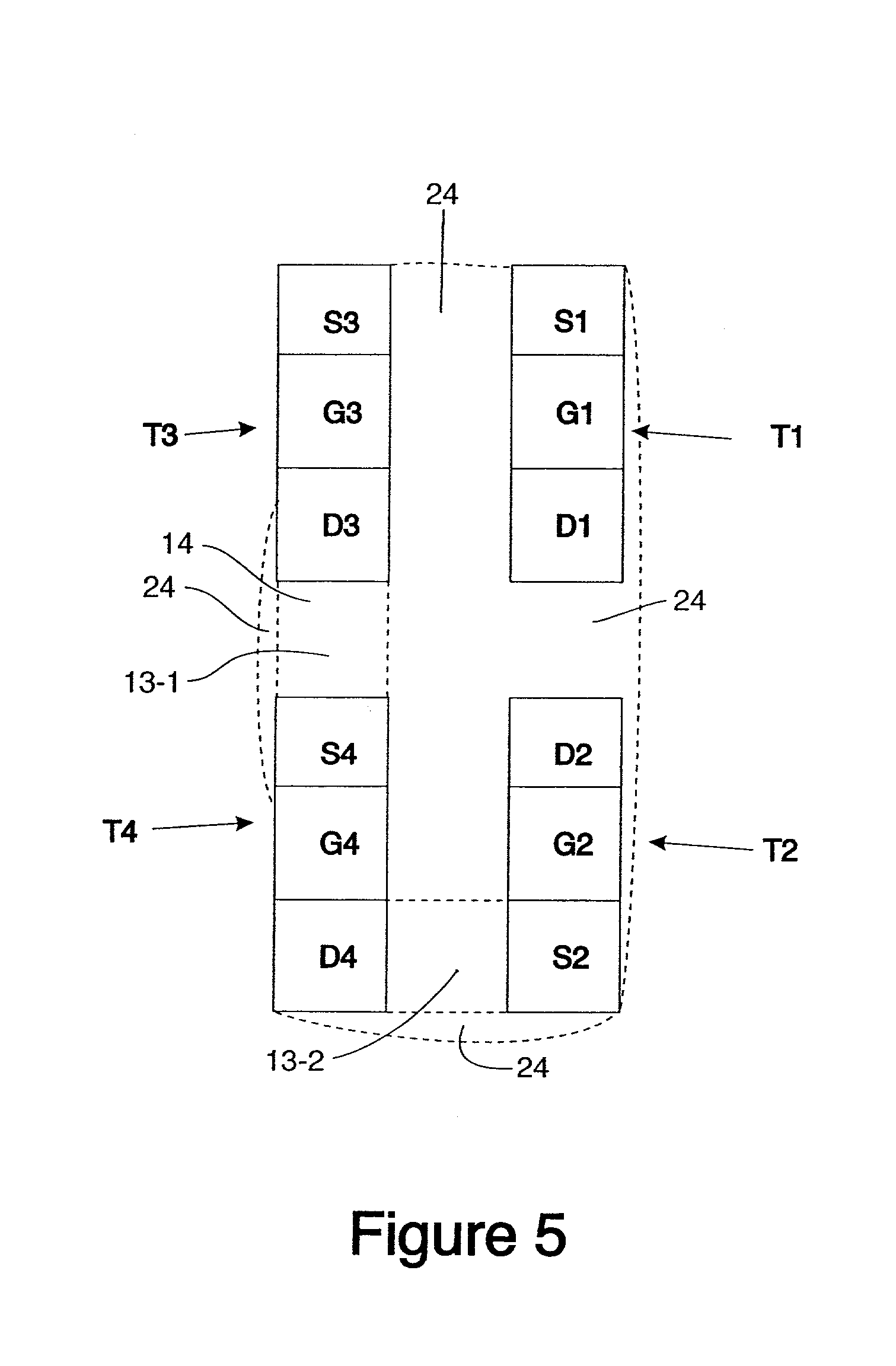Implanted hidden interconnections in a semiconductor device for preventing reverse engineering
- Summary
- Abstract
- Description
- Claims
- Application Information
AI Technical Summary
Benefits of technology
Problems solved by technology
Method used
Image
Examples
Embodiment Construction
[0015]FIG. 1 is a cross sectional view through a portion of a two interconnected active devices 1, 2 in an integrated circuit. Only a portion of two active devices are shown in FIG. 1 since this invention is concerned with techniques for camouflaging the interconnections rather than with the structure of the devices per se. The depicted portion of active device 1 is a N-type region 11 that could provide the drain, for example, of a first FET transistor 1 and could be formed as an implanted region with a N-type dopant by techniques very well known in the art. Those skilled in the art will recognize, of course, that the N-type region 11 could alternatively form a portion of a diode, a portion of a bipolar transistor or a portion of some other semiconductor structure. The depicted portion of active device 2 is a N-type region 12 that could form the source, for example, of a second FET transistor 2. The function or functions attributed to regions 11 and 12 are not particularly important...
PUM
 Login to View More
Login to View More Abstract
Description
Claims
Application Information
 Login to View More
Login to View More - R&D
- Intellectual Property
- Life Sciences
- Materials
- Tech Scout
- Unparalleled Data Quality
- Higher Quality Content
- 60% Fewer Hallucinations
Browse by: Latest US Patents, China's latest patents, Technical Efficacy Thesaurus, Application Domain, Technology Topic, Popular Technical Reports.
© 2025 PatSnap. All rights reserved.Legal|Privacy policy|Modern Slavery Act Transparency Statement|Sitemap|About US| Contact US: help@patsnap.com



